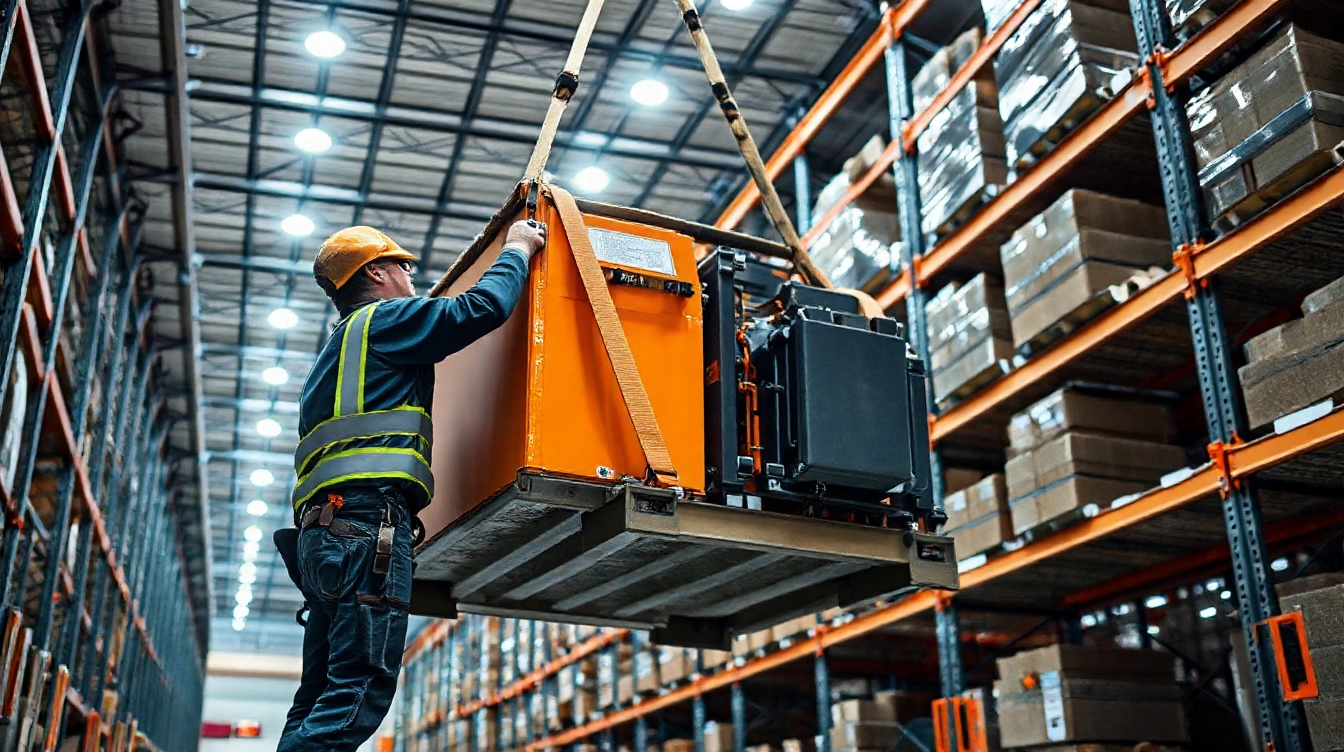Maximizing operational efficiency depends on mastering expert lifting and load securement techniques. Safe practices protect personnel and cargo while reducing delays and costs. Adopting innovative equipment and thorough planning transforms routine tasks into streamlined processes. Understanding compliance requirements further minimizes risks and enhances productivity. Practical examples showcase how targeted strategies deliver measurable improvements across diverse industries. This focus on safety, technology, and maintenance sets the foundation for sustained success and reliability in every lifting operation.
Expert Strategies for Efficient Lifting and Load Securement
Mastering lifting solutions requires adhering to core principles of safety and efficiency. First, understanding the load’s weight and center of gravity is essential. This allows for choosing the right equipment and ensures stability during the lift. Proper training for personnel and routine equipment inspections further minimize risks and enhance operational efficiency.
Additional reading : Essential asbestos surveys in london for your peace of mind
When it comes to load securement best practices, experts emphasize selecting appropriate securing devices that match the cargo type and transport conditions. Methods such as using rated straps, chains, and edge protectors help distribute tension evenly, preventing shifting or damage. Different industries demand tailored solutions; for example, construction often requires heavy-duty chains, while logistics may focus on lightweight but durable straps.
Planning and assessment play a pivotal role in boosting overall operational efficiency. Before lifting or transporting, conducting a thorough risk assessment and detailed load analysis helps identify potential hazards and determine optimal securing methods. Incorporating detailed checklists and utilizing technology for monitoring load stability can significantly improve workflow and safety standards.
Also read : Choosing the best event agency in Paris
By combining these expert load securement methods with thoughtful planning, businesses can achieve both safety and enhanced productivity. Trusted providers like Smithwick Engineering offer specialized solutions that align perfectly with these principles, ensuring reliable lifting solutions adapted to diverse operational needs.
Innovative Equipment for Lifting and Securement
Exploring the latest advancements that enhance safety and efficiency
When selecting lifting equipment and load securement devices, it’s essential to consider innovative solutions that optimize performance and compliance with safety standards. Modern technologies have evolved to meet complex lifting demands, combining durability, ease of use, and precision.
Contemporary lifting gear often integrates advanced materials such as high-strength alloys and synthetic fibers, which provide exceptional load-bearing capacities while reducing weight. This transition allows operators to manage heavier loads with improved agility, minimizing fatigue and risk.
Key features of these cutting-edge devices include:
- Enhanced load indicators that monitor tension in real-time, preventing overload scenarios.
- Modular components for easy adaptability to diverse load shapes and sizes.
- Corrosion-resistant finishes ensuring longevity in harsh environments.
Comparatively, traditional equipment may lack these dynamic capabilities, resulting in less efficient load securement and increased downtime. Choosing the right lifting equipment depends heavily on the specific operational context whether it involves heavy industrial applications or precise load positioning.
Engineers often prioritize devices with certified safety ratings and intuitive handling features, which streamline workflow while maintaining stringent safety protocols. For complex lifting tasks, combining multiple load securement devices designed for different angles and force distributions optimizes stability.
Incorporating these innovative solutions not only safeguards personnel and cargo but also enhances overall operational productivity. For deeper insights into ensuring safety and reliability through specialized lifting and securement services, consider exploring expertise offered by Smithwick Engineering.
Implementing Safety Protocols and Compliance
Ensuring safety protocols and achieving regulation compliance are critical components in lifting and load securement operations. Regulatory requirements set the standard for safe handling practices, mandating specific procedures to minimize risks associated with lifting heavy loads. Compliance with these regulations not only protects personnel but also mitigates potential liabilities and operational interruptions.
Safety training is a key element in operational safety. Personnel must be well-versed in established safety protocols, including proper use of equipment, hazard identification, and emergency response measures. Regular training sessions reinforce best practices and help cultivate a safety-first culture. This proactive approach significantly reduces accidents and injuries.
Maintaining strict regulation compliance directly enhances operational efficiency. By adhering to mandated standards, organizations avoid costly fines and downtime due to incidents or audits. Furthermore, effective compliance leads to better risk minimization, creating a safer work environment and improving overall reliability in lifting and load securement processes.
Real-World Examples: Case Studies in Efficiency
In analyzing case studies related to productivity improvement, it’s clear that expert solutions in action can transform industrial operations dramatically. One pivotal example involves a manufacturing plant that integrated targeted automation technologies. This intervention led to a measurable increase in output while reducing downtime by 25%. Such results underscore how strategic implementation of expert solutions in action supports tangible gains.
Addressing common challenges, like equipment malfunction or inconsistent workflow, requires deep expertise. In one documented success story, a logistics company partnered with specialists to redesign their material handling processes. This collaboration enhanced throughput by streamlining load movement and minimizing bottlenecks. The result was not only faster cycle times but also improved worker safety and satisfaction.
Key takeaways from these case studies include the importance of customizing solutions to the specific industrial context. Attention to detail and continuous monitoring ensure that productivity improvement is sustainable. Companies embracing expert solutions in action report enhanced operational resilience, proving that informed interventions yield long-term benefits.
Selecting and Maintaining Lifting and Load Securement Equipment
Choosing the right lifting and load securement equipment is crucial for operational safety and efficiency. Product recommendations typically emphasize devices with proven durability, high load ratings, and compliance with industry standards. For instance, investing in certified chains, straps, and shackles from reputable manufacturers ensures you meet both safety and performance requirements.
Proper maintenance is equally important to guarantee equipment longevity. Regular inspections for wear, corrosion, and damage help prevent failures. Lubricating moving parts, replacing frayed straps, and tightening fasteners contribute to sustained reliability. Implementing a scheduled maintenance program can extend the service life of your lifting gear while minimizing unexpected downtime.
When making procurement decisions, balancing cost, efficiency, and safety is essential. While budget constraints exist, selecting subpar products to save costs often leads to higher replacement or accident expenses. Prioritizing equipment that reduces operational risk and requires less frequent maintenance offers better value.











